#competing access needs
Online Spaces, Part 6: Making Spaces Work Your Way
It’s all very well to respect other people’s spaces. But how do you make sure there are spaces where you feel at home?
A space might claim to cater to you, but that doesn’t mean you’ll feel comfortable with the social norms there.
First, the hardest thing:
When someone treats you badly in a space that is partly yours, ask them to treat you better.
Just because your needs are obvious to you doesn’t mean that other people understand or remember them.
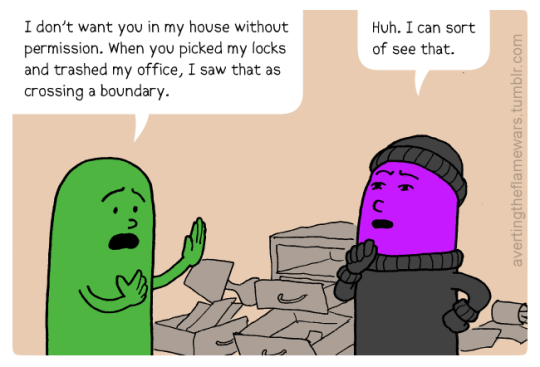
This is… very optional, because it’s often hard and not always safe.
It’s scary to explain how you want to be treated, and scarier to phrase it as a request. There’s emotional risk involved, and no guarantee it will end well. Just lashing out at people can be easier, and can feel a lot more fair.
The question is: what outcome do you want? Asking for kindness has downsides, but it gives you a better chance of getting kindness. Explaining your needs works really well to get people to care about them. When you point out to people that they can choose whether or not to offer you respect and compassion, they usually want to be a person who makes the kinder choice.
Ignore, avoid, block or report those who won’t respect your space when asked.
This can feel super unsatisfying. “Just ignore bullying,” is cliché, condescending advice that rarely works. But it’s cliché because, occasionally, it works really well! And it works more often online than it does on the schoolyard. Curating who you hear from online can wildly alter your experience of reality.
Okay, but what if your problem with a space is more of a… general vibe?
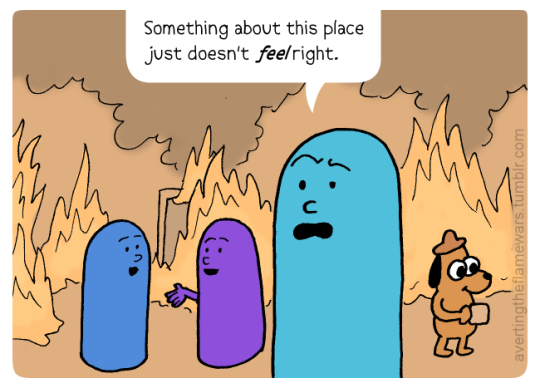
You can’t address that without pinning down the problem.
What kind of interaction do you want to be able to have in this space?
What tends to go wrong when you see someone try to have that interaction?
Maybe a certain type of comment is too taboo, or not taboo enough. It can also be about structure and intention: Who’s an authority in a space, and what do they seem to want for it?
Sometimes it helps to directly question a social rule, hoping that other people in the space dislike that rule as much as you do.

This goes over best if you start by acknowledging the purpose of the rule you’re challenging, and affirming the value of that purpose.

If none of these strategies work, it’s probably time to retreat from the space, or do whatever you judge will work best to protect your own well-being.
You might find that the only way to find your space is to make a new one.
You can start a social media account that only interacts with people who are behaving according to certain rules. Or a blog or forum where you delete any comments that don’t meet with your stated guidelines.
We’d love to see more online spaces with meaningful, explicitly stated social rules. If you create a space that suits your own needs, you might find that others have been longing for the same kind of space as you, without even knowing it.
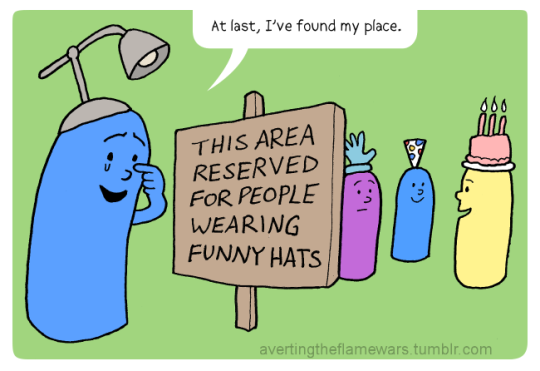
Online Spaces, Part 5: No Space Is Safe For Everyone
The term “safe space” has often meant places that are safe for people in the LGBT+ community. The world and the internet have expanded on the idea, and different web communities have their own notions of what it means to be in a safe space. The phrase still has a strong connotation of protecting a marginalized group, and we’re not sure how universal or exclusive that connotation is.
You can make a space to protect people from a particular kind of bigotry. Or from a kind of hostility or bullying. Or from being caught off-guard by content that can harm them. We like that people have been figuring out ways to protect each other online.
But different types of safety can contradict.
Say you have a safe space for people who need their triggers correctly labelled. That same space can be unsafe for people with disabilities or life situations that make trigger warnings tricky to create. People can have attention issues, or difficulty understanding a warning system, or difficulty making their body or the software do what they want. They may not be fully fluent with the language of a space, or even just the dialect.
Being bad at following a space’s rules is a little unsafe if you have to be on high alert in order to avoid making constant mistakes.
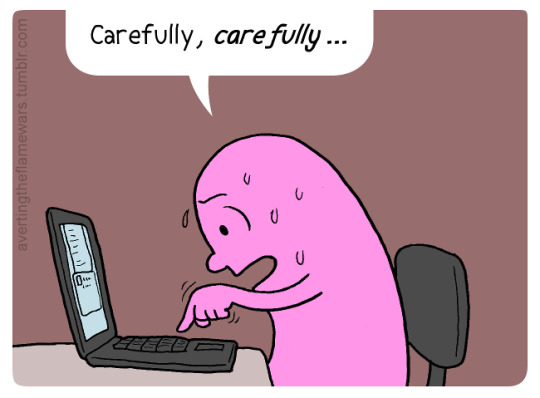
And it can be very unsafe if people respond to mistakes with insults, cruel assumptions, or suggestions of self-harm.
Now, say you have a place that’s safe for people who are processing trauma and anger. It might be unsafe for people who share traits in common with those who inflicted the trauma.

Or it could be unsafe for people who are processing the same trauma in a differentway.

The nature of a space depends on who it’s safe for, and what it’s safe from. It’s only safe if the occupants mostly agree on those two points.
Otherwise, you end up working at cross-purposes.
There’s tension when you try to expand your own type of safe space to encompass a larger community. Suddenly, a lot more people have to mostly agree about who’s supposed to be safe from what.
Sometimes you’ll find that your type of safety is too specific to work in a big space. It’s hard to predict all the needs of a varied community.
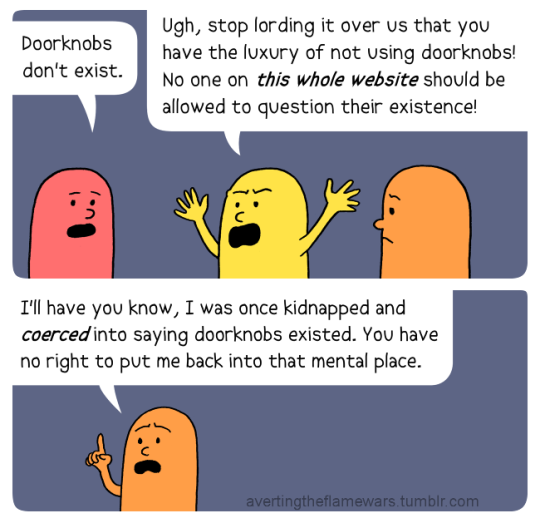
Now, some types of safety do a lot more good than harm even on a large scale. Making a big space safer can be a tense but needed transition.
We here at Averting The Flame Wars want everyone on the internet to be safe from things like public doxing and death threats. But not everyone would agree with that. And even we don’t know exactly how to enforce it.
It’s hard to build a consensus with a large group of people about which rules are worth the trade-offs involved. It’s a struggle between two things:
Freedoms: The safety of being able to talk and act thoughtlessly, to relax and be open about your passions, uncertainties, and experiences.
&
Restrictions: Rules and norms that give people some power over if and how they’re exposed an idea or situation.
These are both types of safety. In general, humans need some of both.
Keeping a space safe means hashing out how you’re going to balance these two needs in lots of different ways.

And it means deciding how you can enforce the restrictions you have. If one person breaks the rules, do others get to try to make them feel bad? If so, what methods are they allowed to use?
If you’re going to honor the needs of different humans, you need to change where the boundaries are from one space to another.
It helps a lot if you state the restrictions and freedoms of your spaces as clearly as possible, so the people who need to avoid it can do so. Some Facebook groups have guidelines for their members, and some blogs have guidelines for commenters.
In a more amorphously owned space like a tag, it’s going to be a lot more subjective. Still, if you feel like you know a safe space well, it can help to articulate what you think the rules are.
Likewise, if you sense that a space isn’t intended for you or has unwritten rules you don’t understand, one option is to ask. Ask the people you encounter about who they want the space to cater to.
If they seem receptive, ask if they’d be willing to explain what kind of behavior they expect from you. (Keep in mind that this can be a lot to ask. Most people don’t know how to articulate exactly what they expect from you. And some have bad experiences with being asked the question.)
You can’t preempt every harmful misunderstanding this way. Our ideas can minimize hurt, not prevent it completely.
Safe online spaces are important. And they can be pretty unsafe.
